Printed in the Winter 2017issue of Quest magazine.
Citation: Levenda, Peter, "Twilight Language: An Appreciation" Quest 105.1 (Winter 2017): pg. 26-31
Reflections on the mysterious punning language behind much of medieval art—and alchemy.
By Peter Levenda
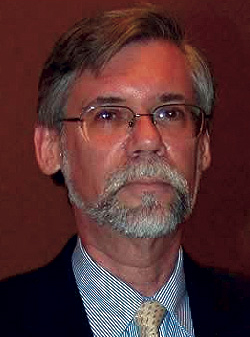 The idea that words in foreign languages—especially ancient languages—contain great power is not new. One only has to examine the great magicians’ spell books—the grimoires—of the Renaissance era and earlier to see that Hebrew and Greek were used extensively in magical diagrams and spells composed by persons who did not have much understanding of the languages themselves. What we know as “abracadabra” or voces magicae were often nothing more than real words in foreign languages that were garbled, misspelled, and mispronounced. Popular grimoires such as the Keys of Solomon and some of the texts that can be found in truncated form in such classic works as Francis Barrett’s The Magus (1801) contain inscriptions in pidgin Hebrew and Greek alongside invocations in Latin. Often Hebrew characters themselves are poorly copied from other sources by persons with no knowledge at all of that language, so that the result is often an indecipherable scribble.
The idea that words in foreign languages—especially ancient languages—contain great power is not new. One only has to examine the great magicians’ spell books—the grimoires—of the Renaissance era and earlier to see that Hebrew and Greek were used extensively in magical diagrams and spells composed by persons who did not have much understanding of the languages themselves. What we know as “abracadabra” or voces magicae were often nothing more than real words in foreign languages that were garbled, misspelled, and mispronounced. Popular grimoires such as the Keys of Solomon and some of the texts that can be found in truncated form in such classic works as Francis Barrett’s The Magus (1801) contain inscriptions in pidgin Hebrew and Greek alongside invocations in Latin. Often Hebrew characters themselves are poorly copied from other sources by persons with no knowledge at all of that language, so that the result is often an indecipherable scribble.
Of all the texts that comprise the Western esoteric “canon,” however, the ones most inaccessible to modern readers are those of alchemy. The alchemical authors did not need to resort to voces magicae in order to encode their work: they wrote in the vernacular. Yet the language of alchemical texts is deliberately obscure, meant to be understood only by those who presumably already know their secrets. They are texts that, at first glance, seem to be intended to deceive and confuse. Like the patter of such comedians as the American “Professor” Irwin Corey and the Mexican actor Cantinflas, they use recognizable words with appropriate syntax and grammar, but the result is meaningless speech that only sounds real but which, upon closer inspection, seems devoid of any real content.
At least that is how alchemical texts are often regarded. Commentators such as the Swiss psychiatrist C.G. Jung have compared alchemical language to the language of dreams and have insisted that they represent unconscious psychological processes. In a sense, that position relieves alchemical authors of the responsibility of being precise or clear in their writings. It also reduces the expectation that a nonpsychologist would be able to interpret an alchemical text. Viewing alchemical works as dream journals (to put perhaps too fine a point on it) requires us to see alchemists as a kind of secret society of people suffering from some form of mental instability who are exchanging reports of their dreams and then arguing with each other about them! While this may seem like an unkind interpretation of Jung’s work, it’s reasonable when one realizes that his informants when it came to dream interpretation were his psychotherapeutic patients.
Other observers have suggested that alchemical texts are written in a coded language that enjoys an ancient pedigree—an argument that insists on a logical context for alchemical texts rather than a purely psychological one. Robert Graves has written about a Druidic “language of the trees” that he believed to be the true language of poetry and myth, a thesis he expanded to book-length form in The White Goddess. The twentieth-century alchemist Fulcanelli has described coded instructions that are embedded in the design and ornamentation of the Gothic cathedrals in his enormously influential books The Mystery of the Cathedrals and The Dwellings of the Philosophers. More recently, in The Secrets of Nostradamus, David Ovason has examined the “green language”: the code in which the quatrains of Nostradamus are written (texts often as obscure as any alchemical treatise). In Hamlet’s Mill, Giorgio de Santillana and Hertha von Dechend have gone to great lengths to suggest that the myths of Europe, Africa, and Asia are coded texts describing ancient astronomical events.
In the fourth century CE Leyden Papyrus—a Greek occult text with alchemical elements—we read of something called the “language of the birds”:
I invoke You in the names which You have in the language of the birds, in that of the hieroglyphics, in that of the Jews, in that of the Egyptians . . . in the hieratic language.
It is this ancient source that provided the inspiration for Fulcanelli’s use of the same term to refer to the “hieratic language” of the Gothic cathedrals. The classical literature of Greece and Rome refers to persons who had the ability to speak with birds and animals, an idea that presupposes a form of consciousness among the beasts that is capable of being understood by humans. It is a kind of metalanguage that does not depend on a vocabulary, grammar, and syntax, as do human languages, but which can transmit information through other means.
The citation above associates the language of the birds with hieroglyphics, Hebrew, and Egyptian: in other words, with written texts that were deemed mysterious or resistant to interpretation. Alchemical texts are written in the vernacular, however. They are written in Arabic, Latin, Greek, and eventually in modern European languages such as German and English. The type of allusive language that Fulcanelli invokes as examples of the “language of the birds” is in the vernacular as well. It employs puns as a kind of Kabbalah that relies more on the sound of words than on their dictionary meanings.
Fulcanelli’s most famous and often-repeated example is that of ars gothique as the homonymous argotique: in English, “Gothic art” as “argot”: slang or cant. To him, words that sound alike mean the same thing and can be used to explain and expand the meanings of each other.
Fulcanelli said that this secret alchemical language permeated medieval symbology and iconography. One comparatively simple example is the Crusaders’ motto Dieu le veut, “God wills it.” To Fulcanelli, this has a hidden meaning, whose pronunciation is virtually the same —Dieu le feu, “God the fire”—which, he says, “explains and justifies the badge adopted by the crusader knights and its color: a red cross borne on the right shoulder” (Fulcanelli, Dwellings, 201n.; emphasis Fulcanelli’s).
Although French is peculiarly well-suited to puns of this kind, they extend beyond the bounds of the French language. Another example cited by Fulcanelli is the name of the famous fifteenth-century alchemist Nicolas Flamel, whose “very name speaks like a pseudonym chosen on purpose.” Flamel evokes flamme, “flame,” the alchemical fire, whereas Nicolas harks back to the Greek níkÄ“, “victory,” plus lâos, “stone,” alluding to Flamel’s alchemical success as “conqueror of the stone” (Fulcanelli, Dwellings, 265).
Fulcanelli values the type of slang known as cant, which was used as coded language by marginalized or specialist populations. It was a debased form of the vernacular which was employed by criminal gangs, for instance, as a kind of in-group jargon. The term cant—which derives from the Latin root cantus, “song”—is used to describe language that is insincere or hypocritical: in other words, deceitful communications. The example of the singsong pleas of beggars is the usual example of this usage.
Fulcanelli’s work is replete with examples of this type of communication. Moreover, he points out that this argot is used in a visual sense as well. In other words, the artistic details of the Gothic cathedrals—statues, ornaments, orientations—are a kind of slang in stone. To Fulcanelli, there is no way to extricate the visual aspect of the cathedral from the purely auditory quality of the spoken words used to describe it, and this multivalent approach is the key to understanding alchemy and its peculiar terminology. What one sees in the stonework of the cathedrals, and other medieval buildings, are clues that are decipherable only to those who speak its associated language, a language, that, moreover, requires a grounding in the classical literature of mythology, religion, and popular folklore. This connection between symbols and texts is as modern as anything by Eco or Derrida.
To take another example, there is a carving on a fifteenth-century building in the French city of Thiers. It is known as the Man of the Woods. Here is Fulcanelli’s description (in part): “This simple man with abundant, disheveled hair, and unkempt beard, this man of nature whose traditional knowledge lead [sic] him to despise the vain frivolity of the poor insane people who think they are wise, stands above the mound of stones which he tramples underfoot. He is the Enlightened one for he has received the light spiritual enlightenment” (Fulcanelli, Dwellings, 251; emphasis Fulcanelli’s).
Nevertheless, the idea that important information needs to be encoded in some form, and made inaccessible to the general population, is problematic. It is a challenge to the general notion of communication as the transfer of information. The coded works of the alchemists seem to argue for a system of communication that is the transfer of deception: a system that undermines the social contract implicit in the idea of communication.
Had the alchemical texts been written in a real code—a substitution cipher, for example, in which one letter equals another, or letters are represented by numbers—then the authors’ intention would have been more obvious. The problem with alchemical texts is that the code is not obvious from the start. The authors of these texts seem to be saying something, and using language “in the clear” to do so, and that is where the real deception lies. One reads along waiting for the text to become clear—waiting for the key to the code, so to speak—and finishes by realizing that there is no key, and that the text remains as inaccessible at the end as it was at the beginning. It seems like a trick, an elitist sort of ludibrium at the expense of the unsuspecting reader. It is a work of deception, certainly, but, paradoxically, is not a lie.
Recent approaches to the problem of language and its sudden development among primates suggest that the initial function of language was to deceive. The lie, according to these studies, is at the heart of language. Language is a symbolic system that uses symbols to represent things that may or may not exist in “reality.” Language is a medium that is based on fiction: the mere fact of tenses—past, present, and future, not to mention all the variations of these basic three, for instance, the subjunctive mood or the future perfect tense—suggests an imaginal realm of possibility rather than a report on tangible events occurring at this precise moment: “He will have bought that car by then” as opposed to “I am hungry” or “there is danger.”
Other aspects of language are also enablers of deception. Metaphors, for instance, are themselves false statements which are intended to be taken as false even though they are used to describe real events or conditions. Their utility as a form of communication is based on the general acknowledgement by the audience—the consensus—that the metaphor is not true in any kind of real sense, but is only an imaginary statement that nevertheless points towards the truth. Metaphor, as the carrier of a kind of mini-myth, serves as shorthand for the truth.
Indeed, the philosopher Sallustius (also of the fourth century CE, the same period as the Leyden Papyrus) wrote, “One may call the world a myth,” a sentiment that has gained popularity recently in the relatively new field of consciousness studies. From this perspective, the world we experience with our physical senses is a fabrication, a construct, that is not representative of reality but only of a model of reality. This idea is at the heart of alchemy, and of the twilight language employed by alchemists to reinforce that idea using the best tool at their disposal.
In an article published in this magazine a few years ago, Cherry Gilchrist addressed the idea of esoteric orders and secrecy. She pointed out that one of the usual reasons given for secrecy in occult lore was the desire to protect sacred and powerful knowledge from the profane in order to protect the world from amateur magicians. Another reason given was the necessity of maintaining a degree of security as a safeguard for the practitioners themselves, for their “psychological well-being” and to provide an environment conducive to the operations of the work (Gilchrist, 93). The article revolved around the idea of esoteric orders and secret societies and the social organization of occult practices and initiatory bodies—in other words, around ritual and ceremonial secrecy. Indeed, in England and Ireland, a jargon called Shelta was discovered among a class of Irish “gypsies” called Tinkers. It has been linked (see Sinclair) to the original stonemasons as a secret language that apprentices had to learn before they could progress to the third degree of their craft: a craft that eventually developed into today’s most famous secret society, Freemasonry.
The idea that language itself evolved out of ritual is a relatively modern one, but one that has attracted some academic attention (see Knight, 68–91). Music, dance, and mime were employed to communicate ideas: that is, something intangible but nevertheless important to the group. These cumbersome and time-consuming methods were gradually replaced or enhanced by language, which sought to do the same thing.
In fact language was used to reinforce an insider/outsider dichotomy in which “we” know what our language/words/symbols mean but “they” don’t. In some cases, this was made necessary by political or cultural considerations. Ritual practices that society would consider blasphemous, obscene, or even criminal would have to be concealed, not only during the operations themselves, but also in any discussion of them. So strategies such as cant or argotique or even Shelta were employed as a spoken code. In India, where Tantra was considered an antinomian and transgressive practice, the same need for a coded language obtained.
But there is no alchemical secret society. Alchemists in the West were not initiated, did not belong to groups that met underground, and did not derive their training in a structured way from other alchemists. So the usual reasons given for ritual secrecy do not apply in this case. Alchemists, in fact, learned their art from texts, and in this way they were peculiarly modern.
With alchemy, we have a rich literature that is full of both language and art. These media are equally obscure, with alchemical art often being described as “surreal,” and indeed the Surrealist movement of the twentieth century embraced alchemy as a kind of proto-Surrealism. But alchemical literature and art seem to insist on using communication to create distance between the author and the reader, an approach that seems counterintuitive. Why did it become necessary or desirable to employ language to render communication less rather than more effective?
The answer to this question is to be found in the very nature of language itself and in particular a subset known as “twilight language.”
Twilight language is the medium in which the texts of Indian alchemy and Tantra are written. It is a language that exists in the realm between what is “real” and what is “imaginary.” In my book The Tantric Alchemist I have shown how the twilight language of India can be used to great effect when applied to European alchemical texts, but for now we will focus on the nature of that language itself.
The term “twilight language” comes from the Sanskrit sandhyÄ-bhÄá¹£Ä, which some scholars also have translated as “intentional language.” This is an interesting idea in light of the above, for it implies a language that defeats the purpose of language: a text that is composed of metaphors, obfuscation, and misdirection but which paradoxically is intended to reveal a hidden truth.
Speakers of a common language collaborate in the multitude of deceptions that are present in their speech. We use language to disguise our feelings, to conceal our true natures, to present ourselves in the best possible light. We deceive—ourselves and others—to such an extent that when giving evidence in a court of law we are required to take an oath to tell the truth, the whole truth, and nothing but the truth—as if only the penalty of perjury would inspire in us a desire, finally, to be truthful about anything. (Interestingly, the word sacrament comes to us from the Latin root sacramentum, meaning “oath,” a word that also came to mean “mystery.” Fulcanelli would approve.)
When this is the case, how does one present knowledge in such a way that there can be no mistaking either the intent of the author or the truth of the subject? If one writes a text the way most authors write texts, it can be assumed that there will be something left out, something embellished, something extraneous to the matter at hand. We expect this, without even being conscious that we do. We write the way we speak, and we read the way we write. Most of the time that speech is unintentional: it comes naturally, fluidly, but full of the possibility of error, exaggeration, metaphors that can be misunderstood, and even deceptions of which the author herself or himself may not be aware. If, however, we write with intention—with knowing how each word will be recognized, understood, and interpreted—then writing transcends the normal function of language. It becomes a kind of mathematics or scientific notation, in which emotion and psyche play no role. It strives to tell the truth.
In order to do that effectively, new terms and concepts need to be introduced that will strain the normal function of language. Just as hallucinogenic drugs strain the senses and reorganize their operation, the hallucinatory texts of the alchemists force the reader to find new meanings and significance for everyday words. To make matters worse, alchemical texts often contradict each other, which only adds to the general confusion and the exasperation with which many observers treat the entire field. Yet, while one alchemical text may contradict another, each text itself is internally consistent.
Alchemical works are replete with terms such as “our mercury” and “our gold,” which are ways of signaling that the elements we know by these names are not the ones intended by the authors. This forces the reader to abandon any notion that it is possible to derive chemical compounds through a simple reading of the text. The search for a formula to turn lead into gold seems doomed to failure from the very start when terms are not defined or identified. Add to that the confusion created when impossible concepts are introduced, such as the Green Lion or Red Dragon, and you are reduced to considering the entire subject one of fancy and imagination that has no relevance to the “real,” or at least to the physical, world.
The twilight language of Indian and Chinese alchemy, however, does provide us with a key to understanding the arcane scriptures of the European alchemists for the simple reason that they employ precisely the same terminology. You will find references to dragons, mercury, gold, and all the instrumentation of the alchemical laboratory familiar to readers of Western alchemical works, such as the writings of the seventeenth-century Welsh alchemist Thomas Vaughan; the Turba philosophorum (“The Crowd of Philosophers”); the Rosarium philosophorum (“The Rose Garden of the Philosophers”); or the works of Michael Maier. The value of the twilight language rests in the discovery that the Tantrikas and the Chinese alchemists were referring not only to chemical—that is, to laboratory—processes but were insisting on biological analogues. The alembic, retort, and other lab equipment found in the secret rooms of the European “puffers” are all present in the human body as depicted in the charts and diagrams of Indian and Chinese alchemy. In fact, one will come across constant references to “semen,” “seed,” and “menstruum” as well as other biological (and especially sexual) terms in European alchemical literature, particularly in the works of Thomas Vaughan.
Is that, then, the key to understanding alchemy? Well, almost. Are references to semen and the menstruum meant to be taken literally after all? Well, yes and no. Twilight language is meant to be both literal and figurative. Biological references are only part of the puzzle; otherwise twilight language would not be necessary.
What the alchemical texts conceal, and what twilight language reveals, is a “science” and an “art”—we really do not have a word in the English language that encompasses both—that is a study of reality itself. This is not the materialist reality of the scientist alone, and it is not the reality of the artistic or religious spirit alone. Twilight language is a kind of notation that describes both physical reality and the consciousness that perceives it. To try to derive single definitions for the terms one finds in Fulcanelli or in any of the other alchemical authors is to miss the point entirely. Each term in the twilight language is multivalent as well as multivocal. Twilight language describes a process, and it is that process that is identical for everything in creation, since everything in creation proceeded from the same First Cause.
Alchemical authors constantly refer to creation, and it is important to pay attention. Alchemists attempt to reimagine, revisit, and recreate the moment of the Big Bang (or however one wants to characterize that initial impetus that gave rise to everything we know). To the alchemist, creation is ongoing. It has not stopped. The alchemists know that the universe is constantly expanding and that we are part of that expansion. Alchemists attempt to mimic that process, and it is a process that includes not only chemical transformations in the laboratory but psychobiological transformations that mirror the chemical versions.
Twilight language describes this process in a way that is applicable to all fields of human endeavor. “Our mercury” is everywhere, as is “our gold.” While it seems almost insipid—a kind of New Age “we are all one” sentiment—the alchemist means it literally, and demonstrably. It is a way of telling the absolute truth, using the same language that we employ to lie and to deceive, and turning it on its head with all its metaphors and tenses and literary allusions by making it purely intentional and deliberate. It is the paradox of twilight language that makes it so compelling, and in that tension between the word and what it represents—between the symbol and the thing symbolized—is found the truth.
Sources
De Santillana, Giorgio, and Hertha von Dechend. Hamlet’s Mill: An Essay Investigating the Origins of Human Knowledge and Its Transmission through Myth. Boston: David R. Godine, 1969.
Fulcanelli. The Dwellings of the Philosophers. Translated by Brigitte Donvez and Lionel Perrin. Boulder, Colo.: Archive Press, 1999.
——. The Mystery of the Cathedrals. Translated by Mary Sworder. Las Vegas: Brotherhood of Light, 1990.
Gilchrist, Cherry. “The Open Secret of the Esoteric Orders.” Quest, summer 2013, 90–93, 120.
Graves, Robert. The White Goddess. New York: Farrar, Straus, and Giroux, 1948.
Jung, C.G. Alchemical Studies. Translated by R.F.C. Hull. Princeton: Princeton/Bollingen, 1983.
Knight, Chris. “Ritual/Speech Coevolution: A Solution to the Problem of Deception.” In James R. Hurford, Michael Studdert-Kennedy, and Chris Knight, eds. Approaches to the Evolution of Language. Cambridge: Cambridge University Press, 1998, 68–91.
Levenda, Peter. The Tantric Alchemist: Thomas Vaughan and the Indian Tantric Tradition. Lake Worth. Fla.: Ibis, 2015.
Ovason, David. The Secrets of Nostradamus. London: Random House, 1997.
Sinclair, A.T. “The Secret Language of Masons and Tinkers,” The Journal of American Folklore, 22:86, Oct.–Dec. 1909, 353–364.
Peter Levenda is an author specializing in esoterica and historical investigation. His esoteric works include such titles as The Dark Lord; The Tantric Temples; and Stairway to Heaven: Chinese Alchemists, Jewish Kabbalists, and the Art of Spiritual Transformation.
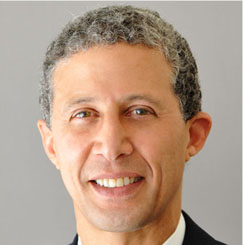 At this point in my life I have done a significant amount of travel, yet there are still certain things that never cease to amaze me. Often I find myself waking early in the morning to go to the airport. Within a few hours I am getting off of a plane in a place whose flora and fauna, geography, climate, language, and customs have shifted dramatically from those of “home.” The outfits people wear, the ways they recognize and celebrate divinity, the foods they eat, even the way they eat their foods can seem so different. While visiting with my wife’s family in the multicultural and cosmopolitan city of Singapore, more than once I have had the experience of eating breakfast with my fingers, lunch with a spoon and fork, and dinner with chopsticks, depending on whether I found myself in an Indian, Eurasian, or Chinese community.
At this point in my life I have done a significant amount of travel, yet there are still certain things that never cease to amaze me. Often I find myself waking early in the morning to go to the airport. Within a few hours I am getting off of a plane in a place whose flora and fauna, geography, climate, language, and customs have shifted dramatically from those of “home.” The outfits people wear, the ways they recognize and celebrate divinity, the foods they eat, even the way they eat their foods can seem so different. While visiting with my wife’s family in the multicultural and cosmopolitan city of Singapore, more than once I have had the experience of eating breakfast with my fingers, lunch with a spoon and fork, and dinner with chopsticks, depending on whether I found myself in an Indian, Eurasian, or Chinese community.

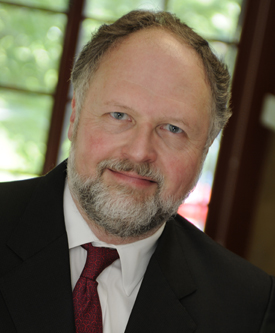 It is a kind of disease to which editors are prone. Since I have been writing editorials for over thirty years now, I have had a high level of exposure.
It is a kind of disease to which editors are prone. Since I have been writing editorials for over thirty years now, I have had a high level of exposure. The idea that words in foreign languages—especially ancient languages—contain great power is not new. One only has to examine the great magicians’ spell books—the grimoires—of the Renaissance era and earlier to see that Hebrew and Greek were used extensively in magical diagrams and spells composed by persons who did not have much understanding of the languages themselves. What we know as “abracadabra” or voces magicae were often nothing more than real words in foreign languages that were garbled, misspelled, and mispronounced. Popular grimoires such as the Keys of Solomon and some of the texts that can be found in truncated form in such classic works as Francis Barrett’s The Magus (1801) contain inscriptions in pidgin Hebrew and Greek alongside invocations in Latin. Often Hebrew characters themselves are poorly copied from other sources by persons with no knowledge at all of that language, so that the result is often an indecipherable scribble.
The idea that words in foreign languages—especially ancient languages—contain great power is not new. One only has to examine the great magicians’ spell books—the grimoires—of the Renaissance era and earlier to see that Hebrew and Greek were used extensively in magical diagrams and spells composed by persons who did not have much understanding of the languages themselves. What we know as “abracadabra” or voces magicae were often nothing more than real words in foreign languages that were garbled, misspelled, and mispronounced. Popular grimoires such as the Keys of Solomon and some of the texts that can be found in truncated form in such classic works as Francis Barrett’s The Magus (1801) contain inscriptions in pidgin Hebrew and Greek alongside invocations in Latin. Often Hebrew characters themselves are poorly copied from other sources by persons with no knowledge at all of that language, so that the result is often an indecipherable scribble.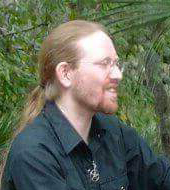 The late 1500s was a tumultuous time for England. Previous to this era, the nation had been an irrelevant hick town on the edge of Europe. The true cultural centers of the Western world were found in places like Germany, Italy, and Spain. However, things were about to change drastically, as the late sixteenth and early seventeenth centuries saw the advent of the Elizabethan era of England—and the world would never be the same.
The late 1500s was a tumultuous time for England. Previous to this era, the nation had been an irrelevant hick town on the edge of Europe. The true cultural centers of the Western world were found in places like Germany, Italy, and Spain. However, things were about to change drastically, as the late sixteenth and early seventeenth centuries saw the advent of the Elizabethan era of England—and the world would never be the same.

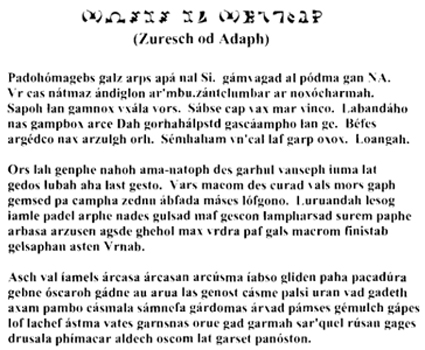
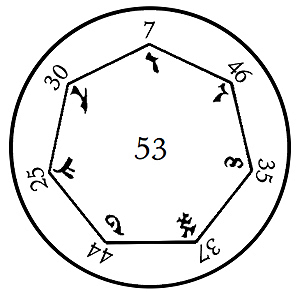
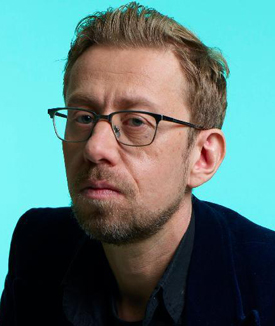 Daniel Pinchbeck: I was born in New York City. My parents were both artists. My father was an abstract painter and sculptor who came from England in the early 1960s to be part of the New York School, the Abstract Expressionists, but missed them by a few years. My mother is a writer and book editor. Her memoir, Minor Characters, focused on her childhood and her experiences as a young woman with the Beat Generation. She dated Jack Kerouac for a while, in 1957, and was with him when On the Road came out and he became a culture hero. This also hastened his self-destruction, as fame fueled his alcoholism.
Daniel Pinchbeck: I was born in New York City. My parents were both artists. My father was an abstract painter and sculptor who came from England in the early 1960s to be part of the New York School, the Abstract Expressionists, but missed them by a few years. My mother is a writer and book editor. Her memoir, Minor Characters, focused on her childhood and her experiences as a young woman with the Beat Generation. She dated Jack Kerouac for a while, in 1957, and was with him when On the Road came out and he became a culture hero. This also hastened his self-destruction, as fame fueled his alcoholism.